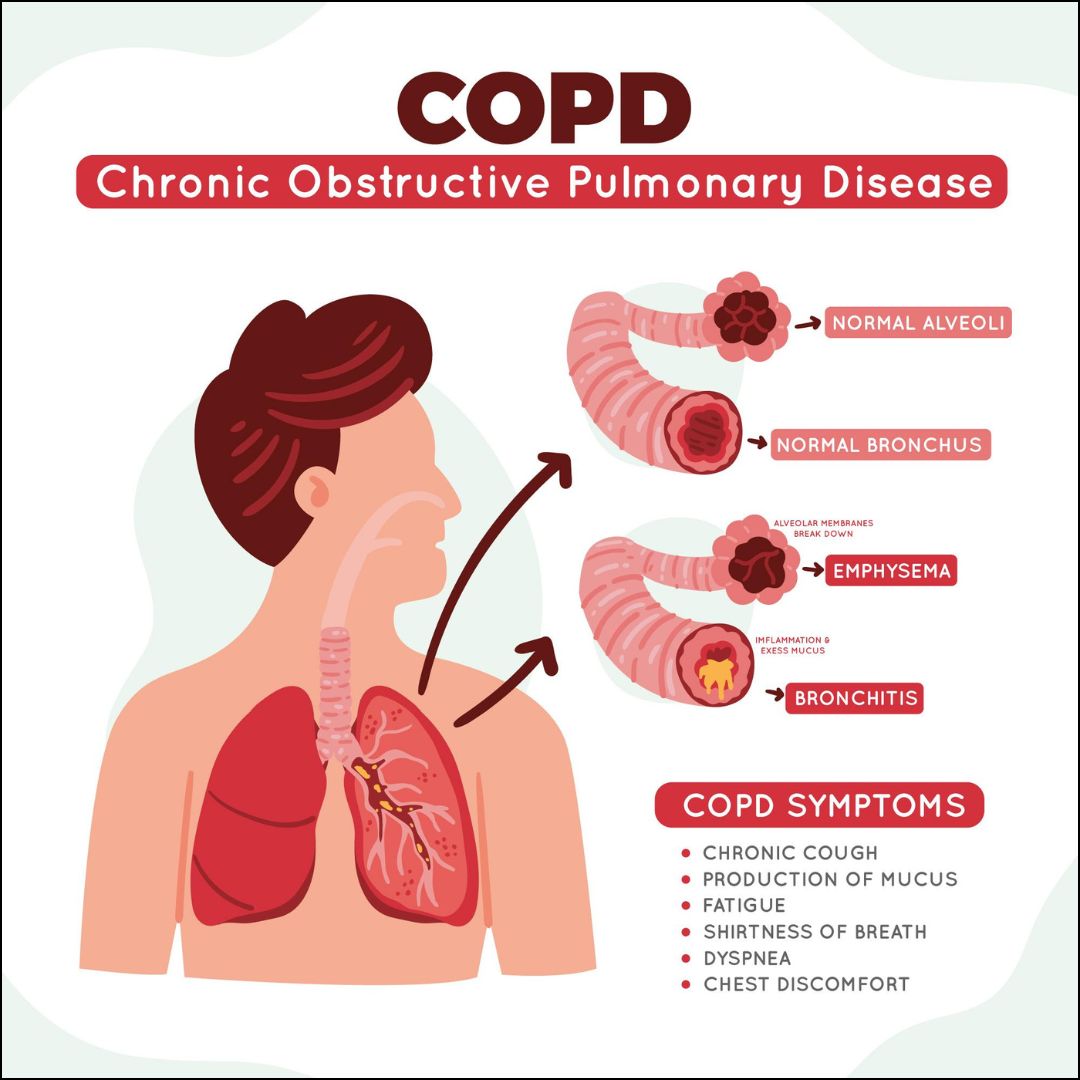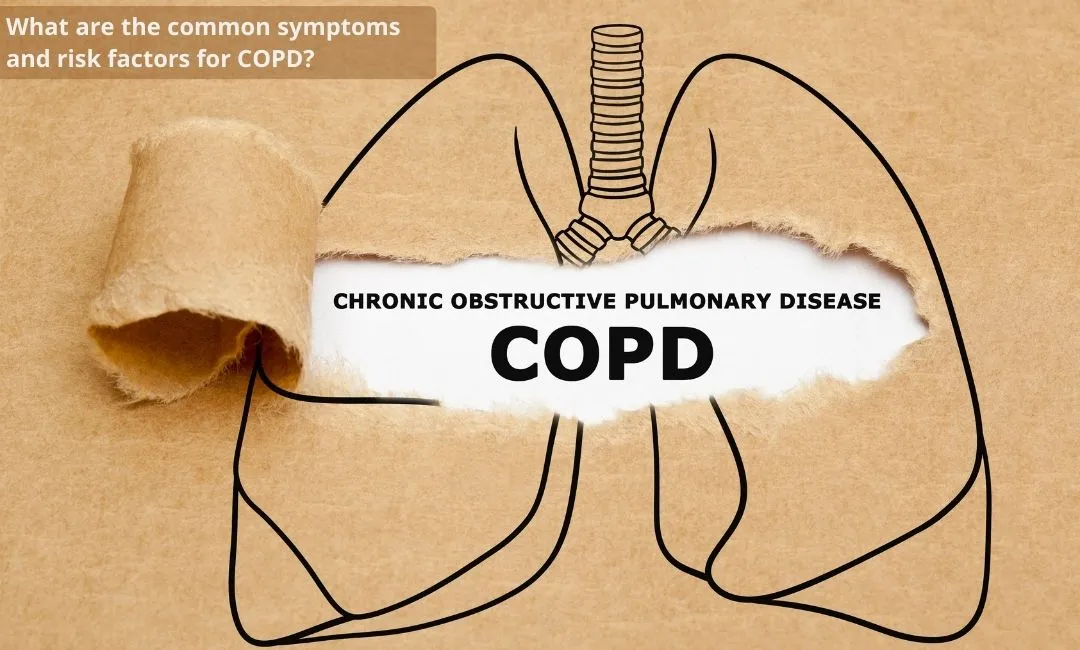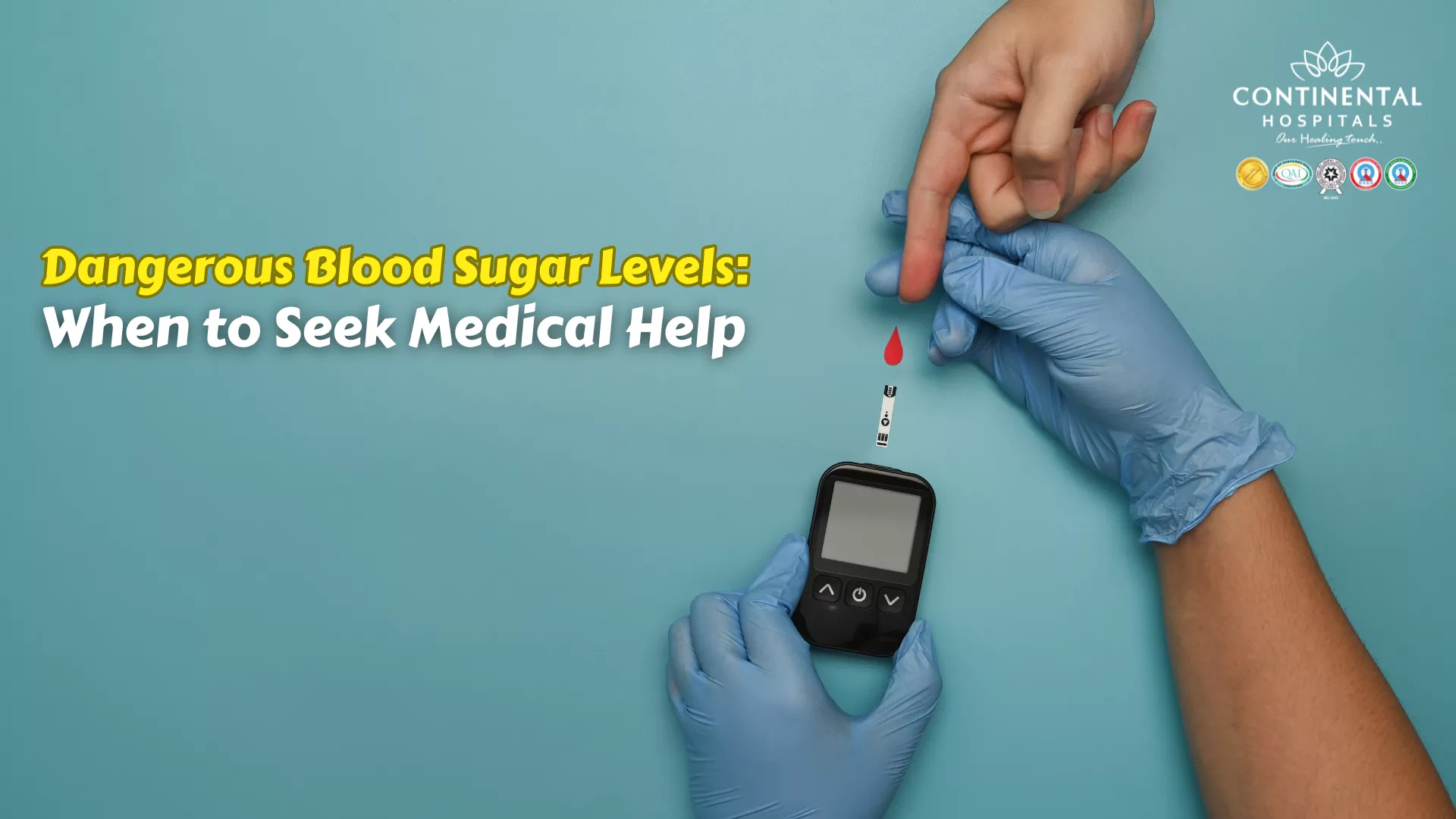Chronic Obstructive Pulmonary Disease, commonly known as COPD, is a prevalent and progressive respiratory condition that affects millions of people worldwide. On World COPD Day, observed on November 15th each year, it is crucial to raise awareness about this disease, its symptoms, risk factors, and the significance of a healthy lifestyle in managing and potentially preventing COPD.
What is COPD?
COPD is a chronic lung disease characterized by airflow obstruction, making it challenging for individuals to breathe. This condition encompasses various lung diseases, primarily chronic bronchitis and emphysema. The airways become inflamed and thickened, and the lung tissues lose their elasticity, leading to difficulty in exhaling air.
Common Symptoms of COPD
Recognizing the signs and symptoms of COPD is vital for early diagnosis and effective management. Some of the most common symptoms include:
Shortness of Breath (Dyspnea): This is often the primary symptom, especially during physical activity, and it tends to worsen over time as the condition progresses.
Chronic Cough: A persistent cough that may produce mucus (also known as sputum) is another hallmark symptom of COPD.
Wheezing: Many individuals with COPD experience a whistling or squeaky sound when they breathe due to narrowed airways.
Chest Tightness: Some people feel a sensation of pressure or tightness in the chest, making breathing difficult.
Frequent Respiratory Infections: COPD makes individuals more susceptible to respiratory infections like pneumonia and bronchitis.
Fatigue: Reduced lung function can cause fatigue and a lack of energy, as the body must work harder to breathe.
Weight Loss: In advanced stages, some individuals may experience unintended weight loss due to the increased effort of breathing and reduced appetite.
Blueness of Lips or Fingertips (Cyanosis): This occurs when there's a lack of oxygen in the bloodstream, leading to a bluish tint in the lips or fingertips.
Swelling in Ankles, Feet, or Legs: Known as peripheral edema, it can be a result of COPD causing strain on the heart, leading to fluid retention.

If you or someone you know is experiencing symptoms related to Chronic Obstructive Pulmonary Disease (COPD), it's essential to consult with a Pulmonologist.
Risk Factors for COPD
Several factors contribute to the development of COPD, including:
Smoking: This is the most significant risk factor for COPD. Cigarette smoking is responsible for the majority of COPD cases. Other forms of tobacco use, such as cigar or pipe smoking, can also contribute to COPD.
Environmental Exposure to Lung Irritants: Long-term exposure to lung irritants such as air pollution, chemical fumes, dust, and industrial smoke can increase the risk of developing COPD.
Genetics: A rare genetic condition called alpha-1-antitrypsin deficiency can predispose individuals to COPD. This condition affects the production of a protective protein in the lungs, leading to lung damage.
Occupational Exposure: Certain occupations that involve exposure to dust, fumes, or gases can increase the risk of COPD. Examples include coal mining, construction work, and jobs in the textile or chemical industries.
Asthma: People with a history of asthma, especially if it is not well-managed or if they have ongoing exposure to irritants, are at higher risk of developing COPD.
Respiratory Infections: Severe respiratory infections during childhood or adulthood can cause lung damage and increase the likelihood of developing COPD later in life.
Age: Although COPD typically develops in people who are middle-aged or older, it can also occur in younger individuals, especially if they have significant exposure to risk factors.
Indoor Air Pollution: Exposure to indoor pollutants like biomass fuels (used for cooking and heating in some parts of the world), can contribute to the development of COPD, particularly in poorly ventilated homes.
Chronic Bronchitis and Emphysema: Conditions like chronic bronchitis and emphysema, which are closely related to COPD, can increase the risk of developing the disease.
Secondhand Smoke: Prolonged exposure to secondhand smoke, especially in enclosed environments, can also lead to COPD, although the risk is lower compared to active smoking.
Healthy Lifestyle Changes to Manage COPD
Quit Smoking: If you smoke, quitting is the most crucial step in managing COPD. Smoking cessation slows down the progression of the disease and improves lung function.
Avoid Secondhand Smoke: Avoid exposure to secondhand smoke and other air pollutants like chemical fumes, dust, and strong odors.
Exercise Regularly: Physical activity can improve your lung function and overall health. Consult with your healthcare provider to determine the appropriate level of exercise for your condition.
Healthy Diet: Maintain a balanced diet rich in fruits, vegetables, whole grains, and lean proteins. This can help you maintain a healthy weight and provide essential nutrients to support your body's functions.
Stay Hydrated: Drink plenty of water to keep mucus in your lungs thin and easier to cough up.
Breathing Techniques: Learn and practice breathing exercises recommended by your healthcare provider or a respiratory therapist. Techniques like pursed-lip breathing and diaphragmatic breathing can help improve breathing efficiency.
Manage Stress: Stress can worsen COPD symptoms. Practice stress-relieving techniques such as meditation, yoga, or hobbies you enjoy to manage stress levels.
Get Vaccinated: Get vaccinated against flu and pneumonia to prevent respiratory infections that can exacerbate COPD symptoms.
Medication Adherence: Take medications as prescribed by your healthcare provider. Bronchodilators, corticosteroids, and other medications can help manage symptoms and prevent flare-ups.
Avoid Air Pollution: Try to stay indoors on days when air quality is poor. Use air purifiers at home to minimize indoor air pollutants.
Pulmonary Rehabilitation: Consider joining a pulmonary rehabilitation program. These programs offer education, exercise training, and support to manage COPD effectively.
Regular Check-ups: Attend regular check-ups with your healthcare provider to monitor your condition and adjust treatment plans as needed.
Conclusion
On World COPD Day, it is essential to spread awareness about this prevalent respiratory condition. Understanding the symptoms, risk factors, and preventive measures empowers individuals to take proactive steps toward better lung health. By adopting a healthy lifestyle, avoiding smoking, minimizing exposure to pollutants, and seeking early medical intervention, the impact of COPD can be reduced, improving the quality of life for those affected.
As we commemorate this day, let's continue to educate, support, and advocate for better lung health and a world free from the burdens of COPD.
If you or someone you know is experiencing symptoms related to Chronic Obstructive Pulmonary Disease (COPD), it's essential to consult with a Pulmonologist.
Related Blog Article
1. Caring for your Lungs
2. Early Detection of Lung Cancer: Signs and Symptoms to Watch For
.webp)














